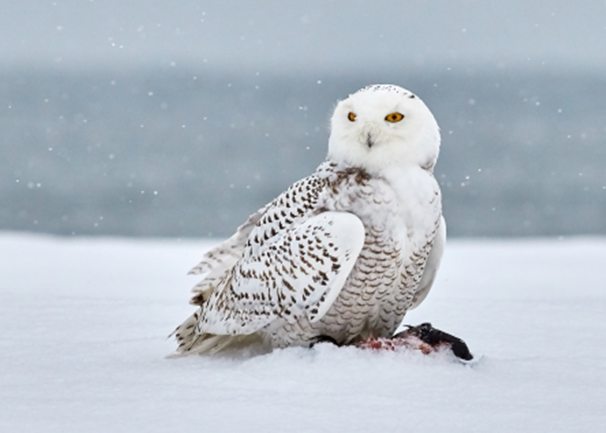Self-Guided Hike: Animals in Winter
We know you love exploring Sunset Hill Farm as much as we do, so we’ve created this self-guided hike to help you learn more about our park. Simply follow the instructions outlined below, go at your own pace, and have fun! To get started on your hike, use the map located at the end of this blog post and follow the trail. Hike topics will be updated monthly.
START: When Winter Comes— When winter comes to the forest, many things change, especially if you are an animal! We have the luxury of going indoors, but wild animals have to live outside all winter. Some things animals will begin to notice is the temperature dropping, trees losing their leaves, and less sunlight. These indicators let animals know it’s time to take action! Most animals do one of three things to survive the winter: hibernate, migrate or adapt. Let’s go explore what different animals do when winter comes.
A: Hibernation— Do you ever wonder what happens to all the turtles and frogs that we love to see during the spring and summer? Well, they are still here beneath the pond’s surface, buried deep in the mud, hibernating. Hibernating means to sleep for long periods of time. While sleeping, an animal’s body slows down major processes like breathing, heating and eating. A few examples of animals that hibernate in our area are: turtles, frogs, skunks, raccoons, bats, salamanders, and even bees! Some animals go into a full hibernation (frogs, turtles, salamanders) and sleep all winter long. Other animals (raccoons, & skunks) go into a torpor state where they may wake up throughout the winter on warm days to search for food. However, they will still lose over half their body weight over the winter!
B: Migration— Another way animals might escape the winter in Indiana is by simply leaving! We call this migrating, and it means moving form one place to another. In this case, animals are migrating from somewhere cold to somewhere warm for a few months, sort of like a vacation. Two major animals that migrate in Indiana are butterflies and birds. Monarch butterflies make a fantastic two-month long journey from Indiana to Mexico once they notice the changes in sunlight beginning to occur. Also, some birds migrate south to warmer places like Florida or Mexico during the winter. Any birds that you might see in the woods around you have either decided to stay for the winter, or they have migrated to Indiana from even farther north! One majestic bird that journey’s down to us from the far north is the Snowy Owl, who has been spotted in places such as the Dunes National Lakeshore.
C: Adaptation— If animals don’t go to sleep during the winter and they don’t migrate, they must adapt instead. Adapt simply means to change. Animals will often adapt their behaviors as well as physical traits, just like us! Animals will grow thicker fur (think putting on a winter coat), search out different food, or even save food from earlier in the year. Some animals who live in our area that adapt for the winter are beavers, squirrels, coyotes, fox, and deer. Squirrels are often seen in the fall scurrying around furiously looking for acorns and walnuts that they can store up to eat during the winter. Look around you - do you see much food that a squirrel could eat now? They have to adapt to the changing season and prepare their food stash for the winter when food is less plentiful.


